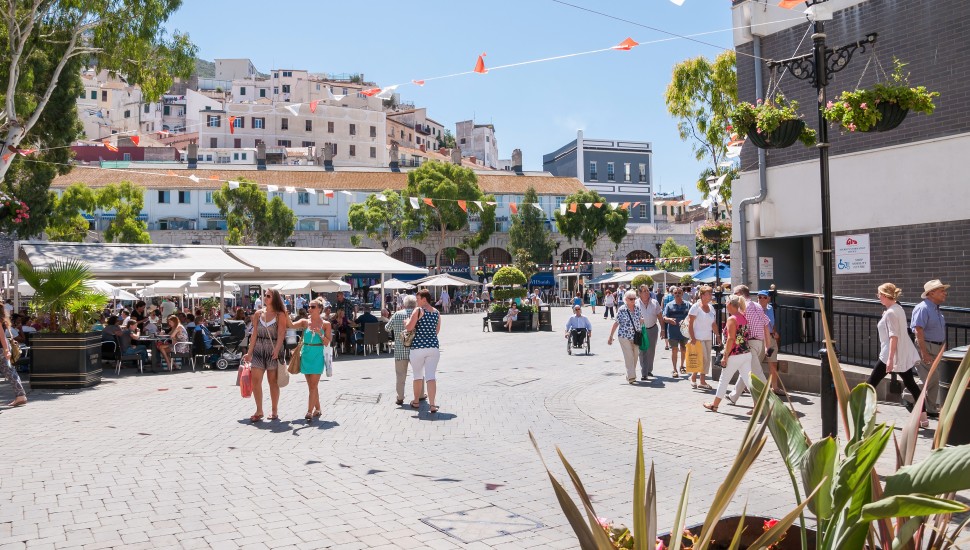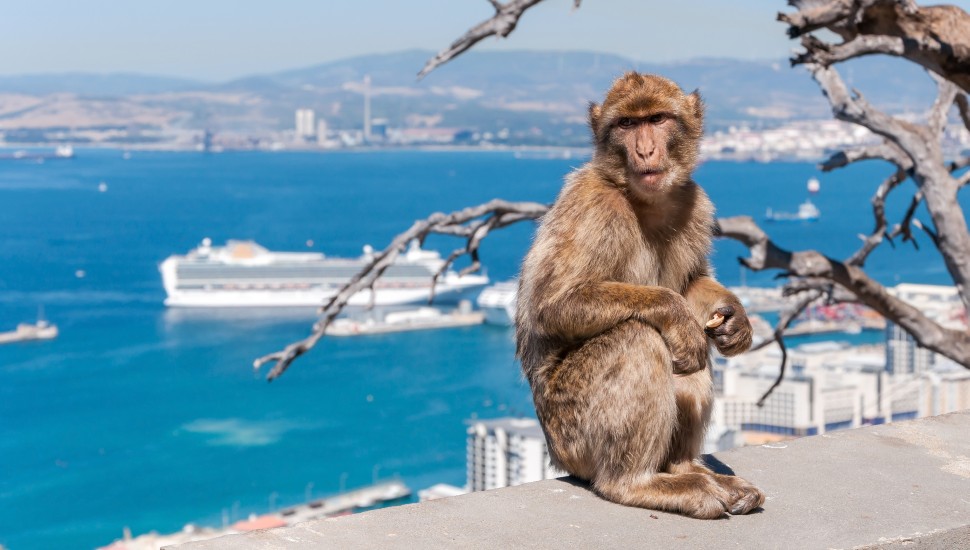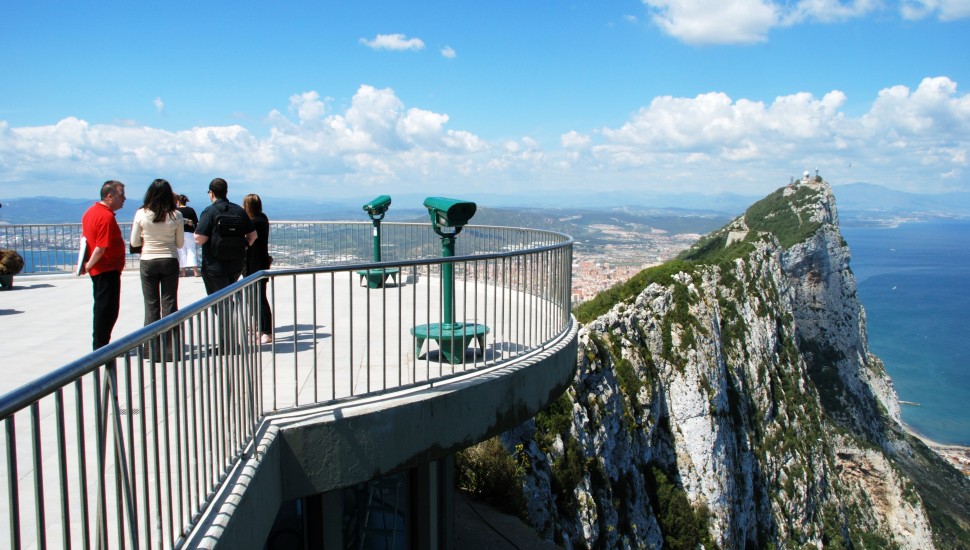A Night on Gibraltar Rock: More British than Britain?
I glanced up at the immense triangle of rock soaring into the hazy blue sunshine, then squinted for the pedestrian entrance.
It is a strange feeling to simply walk into another country on foot. Before Gibraltar, I had only ever made the walk across 'no man's land' on one occasion – between Thailand and Cambodia. And that was just a dusty track. Given the history and the rock's physical presence, this crossing was far more dramatic.
Having read many reports of Spanish border guards making it difficult to cross from La Linea on the Spanish side into Gibraltar, I was surprised how easy it was; there was no prickly Spanish policeman to give me an impromptu interrogation or to riffle through my luggage.
I simply followed the other foot-based entrants and walked into a utilitarian building where a rank of automated passport readers awaited, each set beside a sliding Perspex door.
I slipped my passport into the high-tech border machine, blinked up at a camera and the gate miraculously opened. I didn't interact with a single human being.
It's hard not to smile when you enter Gibraltar. They have found as many British icons as possible and put them near the border. I passed a big banner supporting the UK armed forces inside the security building, then a classic red phone box just outside the exit.
Not having any Gibraltarian or UK pounds, sadly I couldn't obtain a special £2 Gibraltar Rock stamp in my passport.
Once safely back on British territory, a big red bus (of course) was waiting to take me into the city centre, although with a population of around 30,000, 'city' was perhaps pushing it. We moved right across the Rock's manmade runway (military and commercial use) in order to enter the city.
Alighting in the city centre I found a NatWest which allowed me to withdraw money on my UK bank card – and, just as if I was in Britain, I wasn't charged a fee.
Then I had to find my accommodation. Unfortunately I hadn't loaded up the location on Google Maps before left my hotel in Algeciras, so I went about trying to find either a tourist information centre or a Wi-Fi connection. In the famous Casamates Square I glanced up and in the distance saw the sign for my hostel – just by chance. Either Gibraltar is very small or I was very lucky.
 Grand Casemates Square, Gibraltar (mkos83/Bigstock.com)
Grand Casemates Square, Gibraltar (mkos83/Bigstock.com)
The Emile Hostel cost £20 a night for a dormitory bunk bed. This compares to the £11 (15 euros) I had been paying for a double room in Spain.
Having only one night on the Rock, I set off to see the famous Barbary Macaques, who had been living on this tiny British enclave for hundreds of years – though obviously not the same ones!
Given the surprisingly steep ascent I was glad I brought plenty of water with me (from Marks and Spencer's in the city centre). Ministry of Defence signs warned against climbing the fences that lined the road. I passed the barbed-wire gate leading to the ‘Spy Glass' military observation post.
Near the top I came across several monkeys – but unlike other macaques I had encountered on my travels (I recall one stole a can of coke from me in Malaysia), these weren't interested in my beverage or indeed my presence at all. They were all rather sloth-like. The only monkeys with any energy were the babies that leapt between the trees and play-wrestled endearingly on the rocks. It seemed a precarious spot to mess about: it was a 1,398 foot drop into the glassy blue Med below.

Apparently the authorities feed the monkeys. I couldn't helped thinking they must have put some kind of tranquiliser in their meals.
The rock has been in British hands since 1713, giving the Royal Navy a commanding view over the entrance to the Mediterranean for all that time. It wasn't until I reached the top of the southern outcrop that I saw how true this was.
I could see Africa quite clearly across the water, as well as every tanker and pleasure craft in the Straits. There are museum piece guns on top of the Rock, but there is also a fairly modern Royal Navy gun, which from that lofty position could perhaps sink any vessel for 20 miles.
 View platform and the rock of Gibraltar (ArenaPhotoUK/Bigstock.com)
View platform and the rock of Gibraltar (ArenaPhotoUK/Bigstock.com)
No wonder the British have hung on to Gibraltar, despite continuing claims by the Spanish government.
While at the top I saw a runner waiting for some companions to ascend from the other side of the rock – much steeper than the angle from which I had approached. When they approached he said "come on, hurry up" in a very English way, but once the group had arrived, puffing and panting, they all switched into Spanish.
This was a feature of my short time on the Rock: the odd mixture of British and Spanish language. Often I would hear snippets of Spanish followed by English and vice-versa.
There was a cultural mix too. While I only had one night on the Rock, I could tell that it wasn't quite as British as it made out to be. Of course there were the fish and chip shops and English-style pubs, but there were also Spanish bars. And while UK cuisine topped the bill on most menus, it was in fact Spanish food that formed the bulk of options in most establishments.
The next morning, after a delicious Spanish omelette and an invigorating coffee in Casamates Square, I strolled back towards the border, following the big blue arrowed signs which read simply "TO SPAIN".
Get a Quote